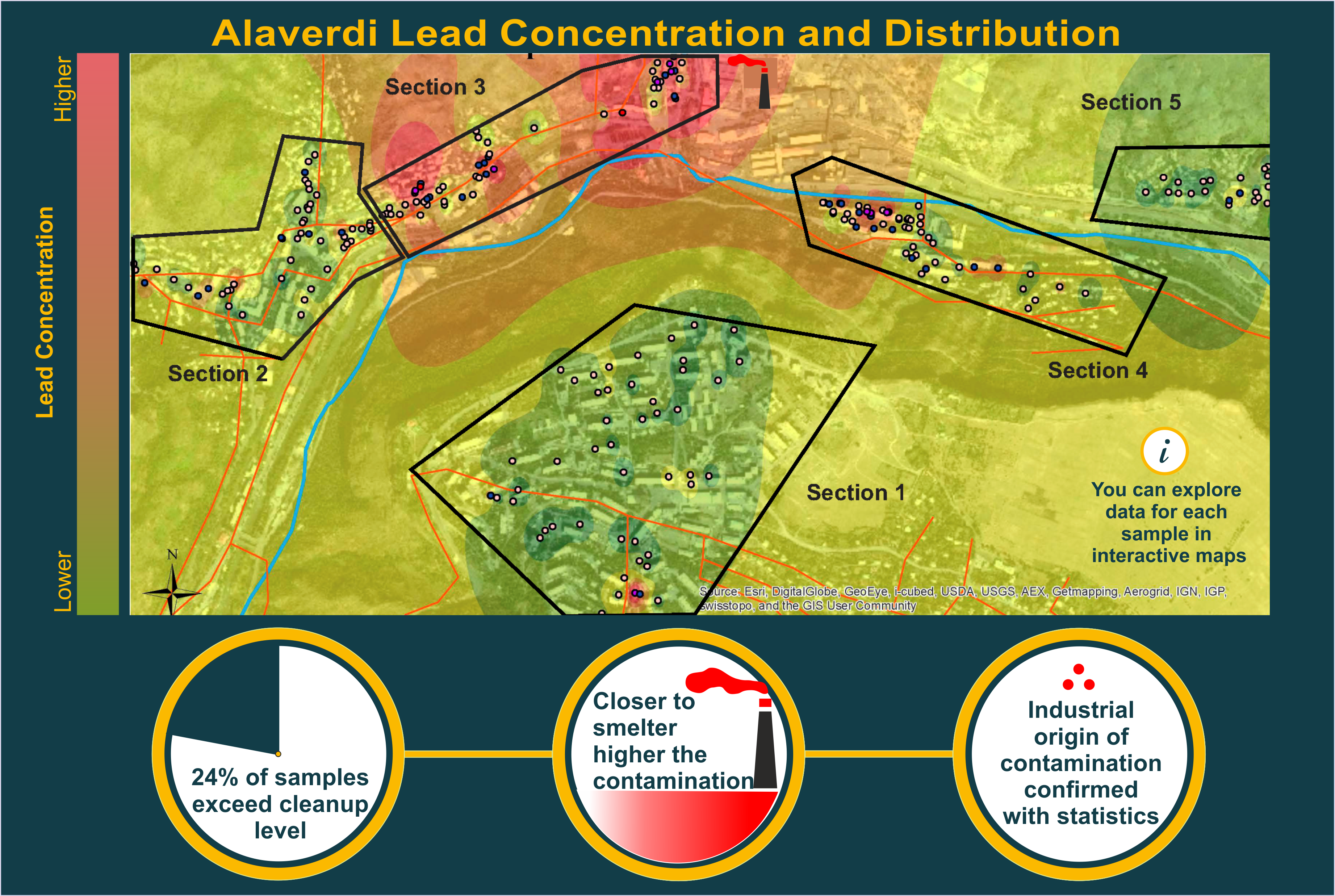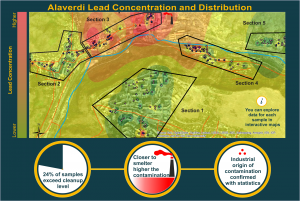
Gerald and Patricia Turpanjian School of Public Health Publishes on Anthropogenic Origin of Contamination by Heavy Metals in Armenia
2 min read YEREVAN, Armenia – The American University of Armenia (AUA) Gerald and Patricia Turpanjian School of Public Health (SPH) recently published an article entitled, “Assessment of residential soil contamination with arsenic and lead in mining and smelting towns of northern Armenia” in the Journal of Geochemical Exploration, one of the highly-ranked peer-reviewed scientific journals in the field of economic geology. The journal publishes articles that illustrate new advances in the application of analytical geoinformatics and geochemistry.
YEREVAN, Armenia – The American University of Armenia (AUA) Gerald and Patricia Turpanjian School of Public Health (SPH) recently published an article entitled, “Assessment of residential soil contamination with arsenic and lead in mining and smelting towns of northern Armenia” in the Journal of Geochemical Exploration, one of the highly-ranked peer-reviewed scientific journals in the field of economic geology. The journal publishes articles that illustrate new advances in the application of analytical geoinformatics and geochemistry.
The aim of the article was to measure the amount of pollution with arsenic and lead in residential soil in Alaverdi and Akhtala and identify the origins of contamination. The main findings of the study include:
- In Alaverdi, the closer the distance and elevation to smelter smokestack, the higher is the contamination with arsenic and lead.
- Residential soil contamination is classified as moderately to strongly polluted in both towns.
- The study demonstrates the industrial origin (anthropogenic) of contamination in Alaverdi and industrial and historical origins (anthropogenic) of contamination in Akhtala.
- The study data are displayed in interactive and interpolation maps.
For the first time in Armenia, the SPH researchers used advanced statistical methods to demonstrate that the amount and distribution of arsenic (As) and lead (Pb) in Alaverdi residential soil have anthropogenic origin and are influenced by emissions of the copper-smelter. A similar analysis demonstrated that As and Pb contamination in Akhtala has two types of anthropogenic origin; one of them possibly originates from the smelter operated in the 10th century during the Armenian Bagratid dynasty and the other includes the industrial mining activities in Akhtala. In both towns the measured concentrations of As and Pb corresponded to moderate to strongly polluted levels according to the geoaccumulation index.
The study provides solid scientific ground for decision makers to plan evidenced-based and community-acceptable strategies that would result in modernization of industrial operations, mitigation of existing environmental risks, and efforts to remediate contamination hotspots.
Drs. Kristina Akopyan (MPH 2013), Varduhi Petrosyan, Ruzanna Grigoryan (MPH 2007) and Dzovinar Melkom Melkomian (MPH 2011) authored the article. Pure Earth (formerly Blacksmith Institute) provided funding and the XRF spectrometer for conducting the research.
You can read the full article here. (Akopyan K, Petrosyan V, Grigoryan R, Melkom Melkomian D, Assessment of residential soil contamination with arsenic and lead in mining and smelting towns of northern Armenia. Journal of Geochemical Exploration, Volume 184, Part A, 2018, Pages 97-109, ISSN 0375-6742, https://doi.org/10.1016/j.gexplo.2017.10.010)
The AUA Gerald and Patricia Turpanjian School of Public Health works actively to improve population health and health services in Armenia and the region through interdisciplinary education and development of public health professionals to be leaders in public health, health services research and evaluation, and health care delivery and management.
